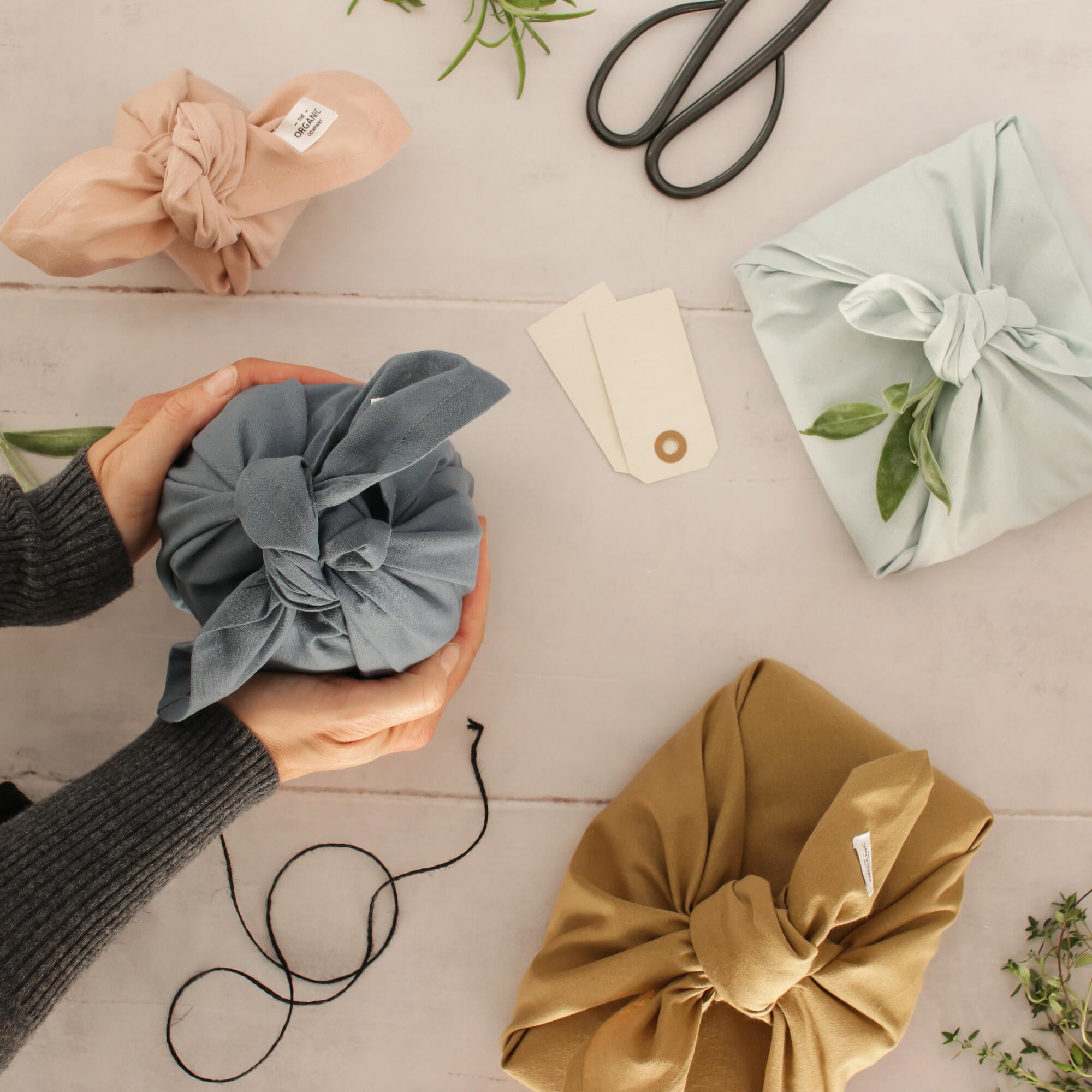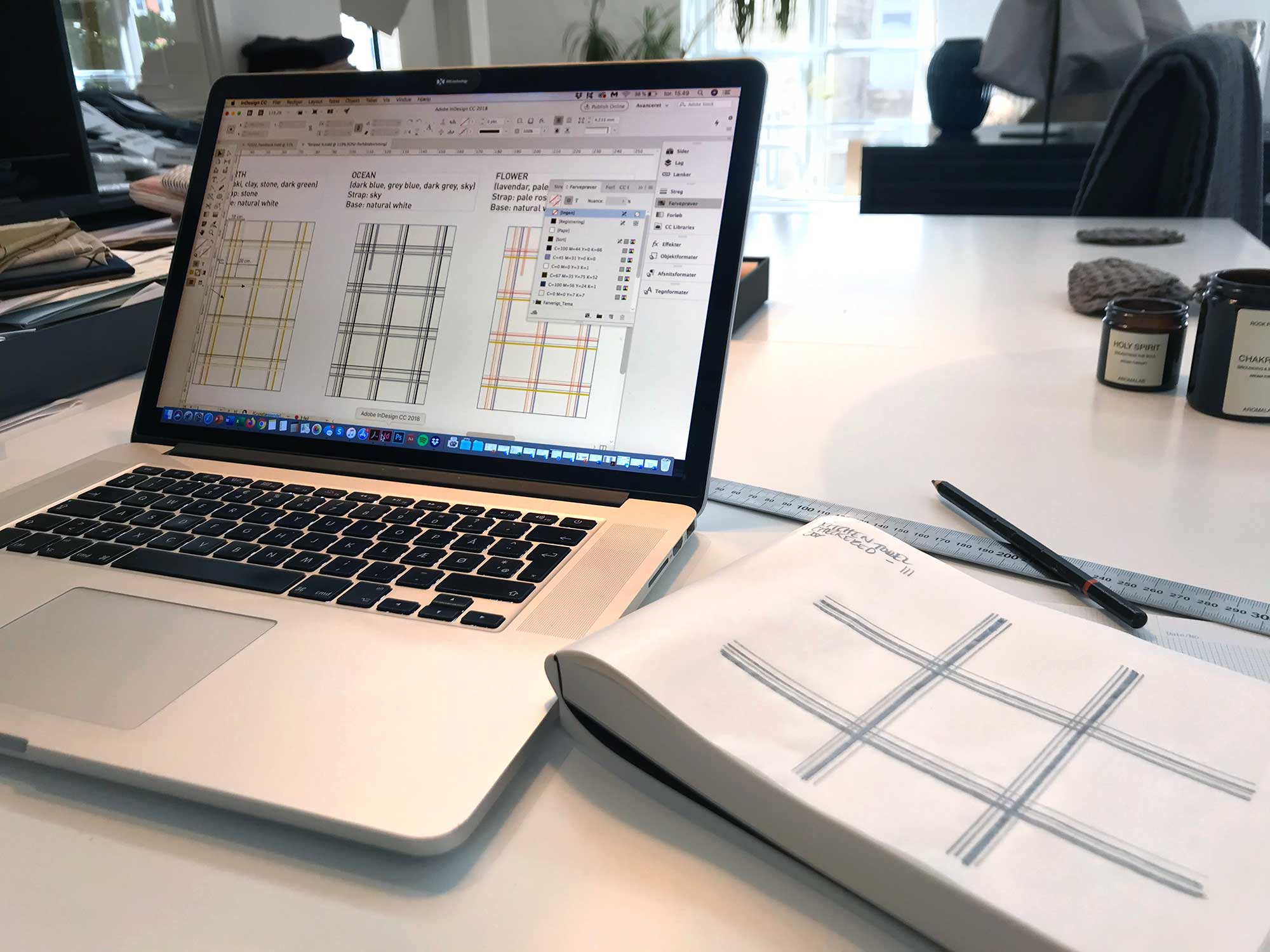
WHAT IS FUROSHIKI? OR THE CLOTH?
Furoshiki is a square piece of fabric (typically from 50×50 to 90×90 cm). The material can be anything from cotton, polyester to silk and is woven. It can be used repeatedly - over and over again. For wrapping something, such as clothes, groceries or a gift.
Learn more about wrapping using Furoshiki.
If you like the historical part, (furoshiki is da. 1300 years old), Furoshiki (風呂敷) is a type of traditional Japanese wrapping cloth traditionally used to transport clothes, gifts or other goods.
This is how my journey began
I was introduced to furoshiki some time ago, and I remember thinking, "That's brilliant - so many options in one square piece of fabric" (with more eco-friendly options, too). And when great people like Bryan from EcoEgo (www.ecoego.dk), and Lori Webb talked about furoshiki and showed me how they used our baby cotton cloth (a product that is no longer in our range) tied as a shopping bag, I have to surrender. I had to begin this journey. I found a concept that through learning, listening and refinement could be great for all of us non-Japanese people (or rather non-Asian people, as it seems that several countries in Asia actually have similar traditions).
How was I supposed to do that?
When I googled furoshiki, I found many displays of gift wraps and "bags" in multiple colors.
How could I combine the inspiration of a Japanese tradition with a new "it-makes-so-much-sense" trend using a Nordic expression and still make it uncomplicated to adopt? Yes, it was actually quite a task.
At first I decided to teach myself how to use this square cloth. Together with Bryan from EcoEgo, I convinced lovely Lori to run a Furoshiki workshop in the EcoEgo store in Copenhagen. Here sat 6-7 women and were tying the square pieces of cloth in different ways. We tried tying all different kinds of things, including gift wrapping with bottles of wine as well as tying a bag to hold a watermelon. It all felt quite peculiar. Because here we were - some Danish women engaged with American Lori, we tried to tie packaging to things, where the result neither looked Japanese nor was particularly beautiful, nor was it straightforward to do, easy or practical. Only Helle Vibeke, who has traveled a lot in Japan, was able to turn it into something beautiful, just like Lori where it was also natural.
This thought still makes me smile. What a beginning. Nevertheless, this also showed me that the journey I had started was probably more challenging than expected. Apart from Bryan, Lori, Helle Vibeke and I, who had seen the brilliance of using a piece of fabric, there was the rest of Denmark and Europe to convince. A story needed to be created to tell people, and to make people know and understand furoshiki.
What exactly is the relevant WHY in this?
Why do so much work for a Japanese tradition that could just stay in Japan? Honestly, the idea really made sense to me and I can be quite persistent. When a good idea can initially be felt (and is verified) and has settled in me, then there is not much that can hold me back. The more I thought and read about furoshiki, the more it made sense.
Furoshiki "the art of wrapping things in a cloth" (let's call it that) can be more than just a new dimension:
- Furoshiki used instead of gift wrapping paper - can save the environment from disposable paper (825 tonnes annually in Denmark alone. Source: AffaldPlus)
- Furoshiki used instead of plastic bags - can save the environment from plastic bags (3.4 million tons of plastic bags are produced and used in the EU. About 90% are the very thin non-recyclable type of plastic bag. Source: unric.org)
In addition, our product - like everything else in our range - must be made from organic cotton. Free of pesticides, chemicals and heavy metals, of course. So everything can be wrapped in our cloths: your baby, swimming and sports equipment, your neck and the food for your picnic - all wrapped with a good conscience and with respect for the things you pack.
- Use the cloth as gift wrapping and save the environment from wasting disposable paper.
- Use the cloth as a bag when you go shopping and save the environment from plastic bags.
With a Nordic and simple expression
We hosted a design competition, and many good design proposals were submitted. Four designs were selected. Ann by Lubich Studio, Cecilie by Mintstudio, Helle by Helle Vibeke Jensen and Jasmine by Jasmine Watson.
Now the WHY was in place along with the expression and the practical aspects. We needed HOW to use it for our customers.
Marketing
Together with the rest of the team, I developed the packaging and how-to videos. Many hours were spent drawing, filming, showing and telling to end up with a clean design that told the story in a simple way.
Below you can see our videos on Youtube.
<3 Joy


